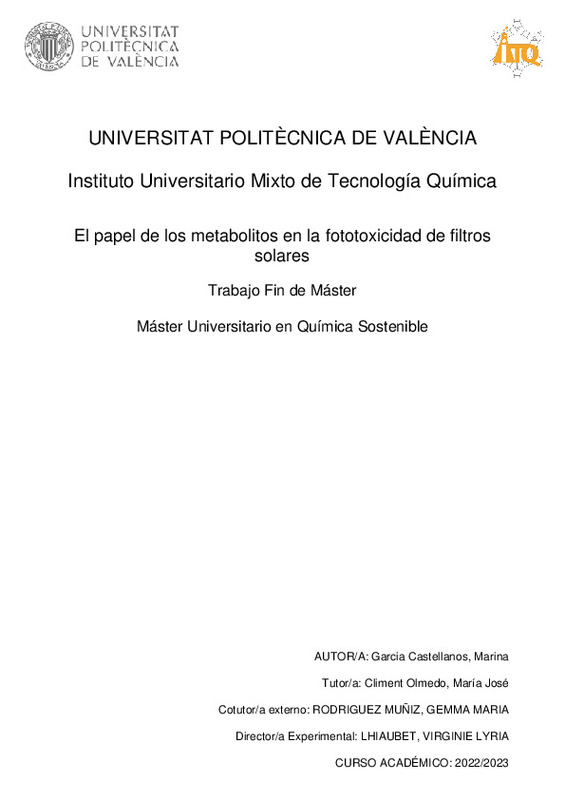|
Resumen:
|
[ES] El uso de los filtros ultravioleta (UV) se ha extendido en la actualidad para
millones de personas. Sin embargo, algunos de ellos no son biodegradables en
su totalidad y las plantas de tratamiento de aguas residuales ...[+]
[ES] El uso de los filtros ultravioleta (UV) se ha extendido en la actualidad para
millones de personas. Sin embargo, algunos de ellos no son biodegradables en
su totalidad y las plantas de tratamiento de aguas residuales muchas veces no
son capaces de filtrarlos correctamente. Este hecho provoca su difusión
ambiental y su detección en el suelo, las aguas continentales, los océanos y
múltiples organismos . En el presente TFM se va a estudiar los metabolitos de
dichos filtros solares y sus propiedades fototóxicas. Dichos filtros solares son
capaces de reaccionar y oxidarse en presencia de luz a metabolitos con diversas
propiedades y efectos altamente negativos sobre el medio ambiente. El impacto
comentado con anterioridad afecta directamente al blanqueamiento de corales.
En cuanto al procedimiento experimental se llevará a cabo la síntesis de
diferentes compuestos su y caracterización mediante técnicas como RMN o
HRMS. Una vez completada dicha síntesis se procederá al estudio de sus
propiedades fotofísicas como la absorción, emisión
(fluorescencia/fosforescencia), o fotólisis de destello láser (absorción transitoria).
Además, se estudiará su reactividad con compuestos biológicos (bases del ADN,
aminoácidos) y su respectivo ensayo en células.
[-]
[EN] The use of ultraviolet (UV) filters is now widespread for millions of people. However, some of them are not fully biodegradable and wastewater treatment plants are often not able to filter them properly. This fact ...[+]
[EN] The use of ultraviolet (UV) filters is now widespread for millions of people. However, some of them are not fully biodegradable and wastewater treatment plants are often not able to filter them properly. This fact causes their environmental diffusion and their detection in soil, inland waters, oceans and multiple organisms. In this TFM we are going to study the metabolites of these sunscreens and their phototoxic properties. These sunscreens are able to react and oxidize in the presence of light to metabolites with diverse properties and highly negative effects on the environment. The aforementioned impact directly affects coral bleaching. As for the experimental procedure, the synthesis of different compounds will be carried out and characterized by techniques such as NMR or HRMS. Once the synthesis is completed, we will proceed to study their photophysical properties such as absorption, emission (fluorescence/phosphorescence), or laser flash photolysis (transient absorption). In addition, its reactivity with biological compounds (DNA bases, amino acids) and their respective assay in cells will be studied.
[-]
|







